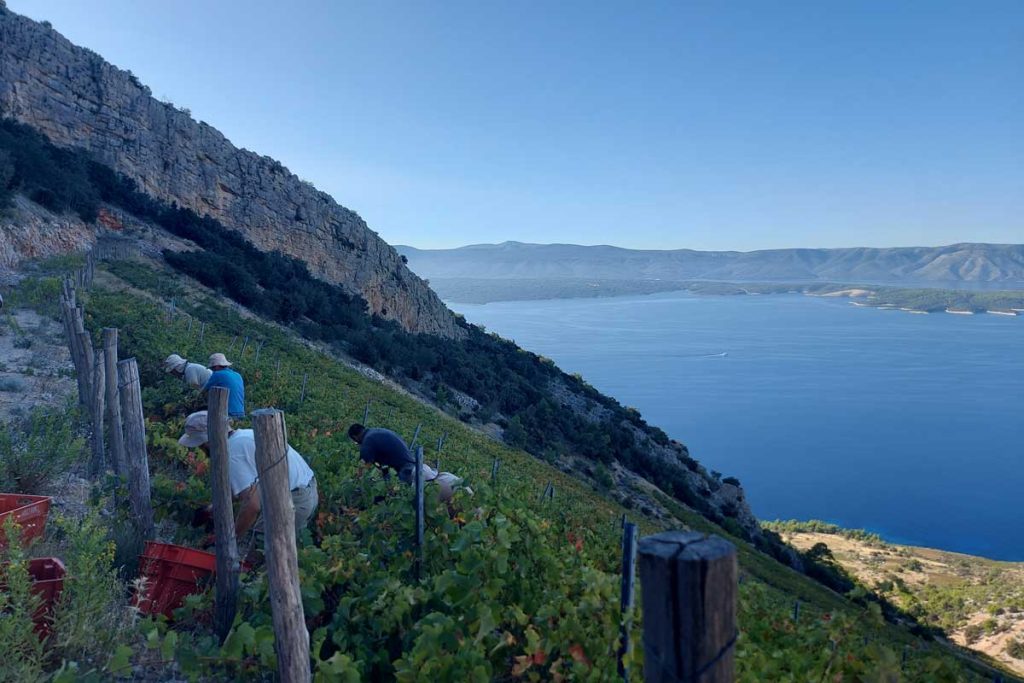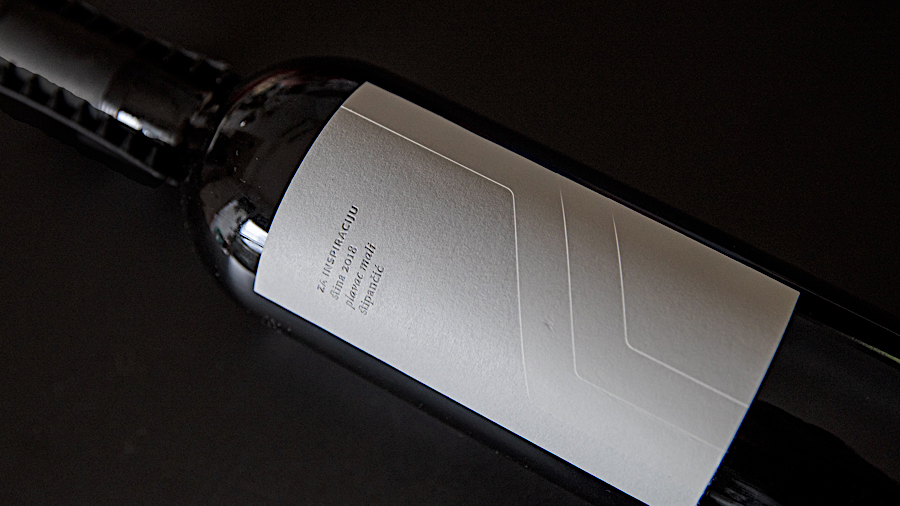December 22, 2023. – In the enchanting world of wine production, some regions defy the ordinary and embrace the extraordinary. As Wine & more writes, Croatia, with its rich tapestry of landscapes, boasts some of the most extreme and awe-inspiring vineyards globally, where the convergence of nature and viticulture paints a mesmerizing picture.

The Extreme VINEYARDS
When we venture beyond the traditional vineyards and steer clear of mere experimental setups, we unearth three predominant categories that epitomize extreme winemaking:
- Elevated Excellence: High Altitude Vineyards
Croatia’s terrains are adorned with vineyards that scale vertiginous heights. These elevated plots, often nestled on steep slopes of Dalmatian islands, present unique challenges and rewards. The thin air and cooler temperatures at these altitudes imbue the grapes with distinctive flavors and aromas, making wines from such vineyards a connoisseur’s delight. - Slopes of Splendor: Vineyard Inclination
The undulating landscapes of Croatia are punctuated with vineyards that sprawl across steep slopes. These terraced vineyards not only offer a visual spectacle but also play a pivotal role in grape cultivation. The inclination ensures optimal sun exposure, soil drainage, and aeration, resulting in grapes that are rich in character and complexity. Navigating these terrains requires skill and dedication, making wines from such vineyards a testament to human perseverance and nature’s bounty. - Nature’s Niche: Unique Conditions
Beyond altitude and inclination, Croatia’s vineyards are characterized by their diverse and unique conditions. From soils rich in minerals to microclimates shaped by proximity to the Adriatic Sea, these vineyards present a mosaic of micro-terroirs. Each vineyard tells a story of its soil, climate, and topography, imparting distinct nuances to the wines crafted from its grapes.
The Elevation Elegance of Croatian HIGH-ALTITUDE Vineyards
Croatia, with its diverse landscapes and rich cultural heritage, boasts some of the world’s most extreme vineyards. These celestial patches of land present an awe-inspiring tableau of nature’s marvels and human determination.
Vineyards located at elevated altitudes normally have lower air pressure and cooler temperatures. This is vital for places with latitudes closer to Earth’s equatorial warm belt.
High-altitude vineyards are known to produce grapes with distinctive characteristics due to the challenging growing conditions. Exposure to intense sunlight and large temperature variations can contribute to unique flavours and aromas in the resulting wines.
There is one important advantage of high-altitude wines in the face of today’s climate changes. Higher altitude enables even ripening of the grapes, resulting in balanced and elegant wines.
Currently, the highest-altitude vineyard in Croatia is in the Dalmatian Hinterland, in the Imotski subregion, at 700 metres above sea level. The vineyard is planted with Chardonnay, though close beneath are planted local grape varieties: Trnjak (red) and Kujundžuša (white).
It is owned by winemaker Stipe Đuzel.
The Unique Tastes of Altitude
The grapes cultivated in these lofty vineyards are not ordinary; they carry the imprint of their high-altitude origins.
Exposed to the relentless embrace of the sun and dramatic day-night temperature shifts, these grapes develop a distinct character. This unique environment imparts special flavors and aromas to the wines, setting them apart in the world of viticulture.
Furthermore, as the global climate undergoes rapid transformations, these elevated vineyards become sanctuaries of consistency. The cooler temperatures and prolonged ripening periods at such heights ensure that the grapes mature uniformly, culminating in wines that are harmonious and refined.
croatia’s STEEP VINEYARDS
A famous Croatian vineyard site, Dingač captivates not only because of its 50-degree slopes and the gorgeous view of the blue Adriatic Sea beneath.
Dingač and Postup are the first protected designations of origins in Croatia, but other spectacular vineyard positions exist in Croatia. Some of them are truly Extreme.
Like the famous Dingač and Postup, other Dalmatian vineyards share similar characteristics. For example,
- Ivan Dolac and Sveta Nedjelja, on Hvar Island
- Murvica and Stipančić, on Brač Island
All of them feature:
- southern exposure
- overlooking the sea reflecting the sun
- very steep slopes
- white rock soil type
There is one another circumstance they all have in common. Plavac mali grape is the dominant grape variety traditionally nurtured in such conditions.
Extreme vineyard on Brač Island: Stipančić

Nestled amidst the picturesque landscapes that resemble something straight out of a postcard, Stipančić vineyard from Stina Winery is a true testament to nature’s awe-inspiring beauty.
At first glance, it beckons travelers with its inviting allure, making it seem like a simple trek to relish in the panoramic vistas.
The pristine white stones, juxtaposed against the backdrop, may seem inviting enough to tempt an adventurer to tread its paths, perhaps even in the most unconventional footwear on a scorching summer day.
However, as with many things in life, looks can be deceiving. The allure of vineyards, especially the likes of Stipančić, often mask the rigorous challenges that lie beneath their enchanting facades. It’s often a conundrum: should one heed the heart’s call or exercise caution?
Spanning an expanse of merely 4 hectares, Stipančić is a sanctuary exclusively for the Plavac Mali grape variety. The journey to this vineyard is fraught with perilous twists and turns, traversing unstable gravel paths that precariously hug the cliff’s edge.
Such treacherous terrains render it inaccessible to conventional vehicles, necessitating vineyard tasks to be carried out with sheer human effort.
A distinctive feature of this region, the white stones scattered across the terrain, are emblematic of the Dalmatian coast, particularly the renowned Brač Island. These stones, hewn from the island’s quarries, have been the cornerstone of Croatian architecture and artistry for generations.
Their luminous white, occasionally tinged with a subtle gray hue, is celebrated for its resilience, multifaceted utility, and unparalleled aesthetic charm.
It is this very resilience and allure of Brač stone that serves as the muse for the Stina Winery’s iconic labels. Echoing the enduring legacy of the wine they encapsulate, these labels, bathed in pristine white reminiscent of Brač stone, are a poignant tribute to the rich cultural tapestry of Dalmatia.
This sentiment resonates profoundly with the Stina Plavac Mali Stipančić, a wine that is the very embodiment of its rugged origins.

Delving into the sensory journey that this wine offers, one encounters a symphony of flavors and textures that defy conventional categorizations.
The palate is enriched with luscious dark fruits, underscored by persistent herbal undertones and an unwavering minerality.
The tannins, with their leathery embrace, envelop the palate in a dance of flavors, ensuring the wine’s distinctive character lingers long after the last sip.
There’s a certain “plasmatic” quality to this wine, a palpable connection to the sun-drenched soils from whence it originates. Notes of carob and sage weave together, creating a harmonious interplay between tannic structure and robust body.
Indeed, the Stina Plavac mali Stipančić stands as a paragon of terroir wines, a true masterpiece deserving of a place of honor on the most discerning connoisseur’s table.
CONCLUSION
In conclusion, Croatia’s extreme vineyards stand as a testament to nature’s winemaking prowess and the indomitable spirit of its vintners.
These vineyards, with their unparalleled beauty and challenges, produce wines that resonate with authenticity, character, and a sense of place. For aficionados and explorers alike, Croatia’s vineyards beckon, promising a journey of discovery and a sip of nature’s winemaking wonders.
NOTE: The article was originally written at wineandmore.com











